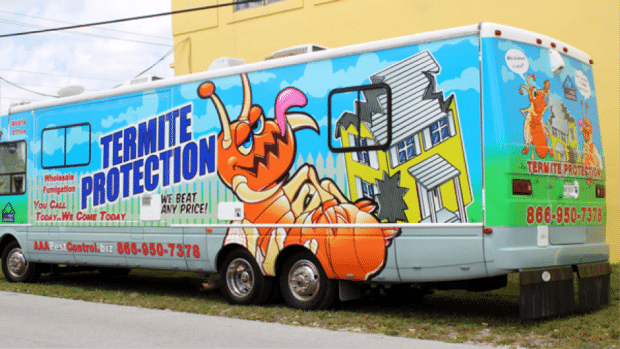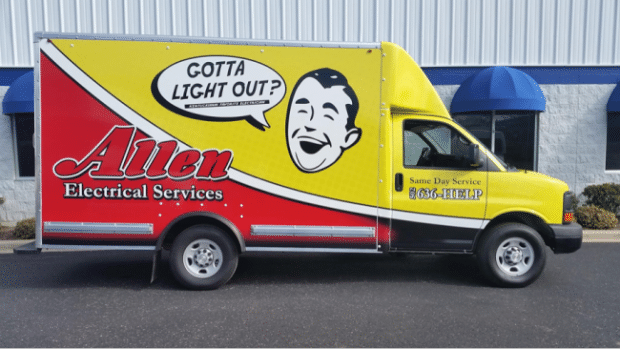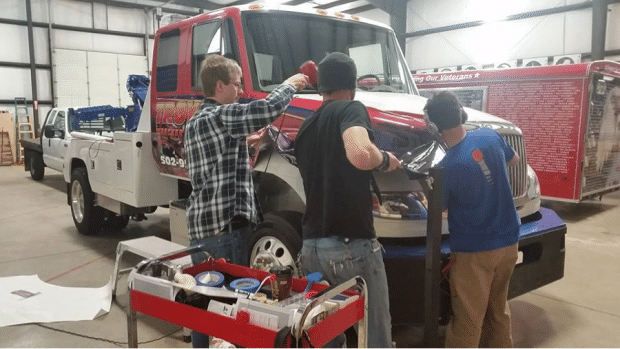By Ben Fellowes, Roland DGA Sr. Copywriter, with contribution from Matt Richart, Co-Owner of Digital EFX Wraps.
Before starting any car wrap design, consider the following 10 do’s and don’ts:
1. Do size up the job and take photos
Before you start designing, you should size up the vehicle. Photograph the vehicle from all sides and take key measurements of the sides, hood, rear, roof and bumpers, then scale the photos accordingly in your design software. Shoot direct shots (never take photographs at an angle) and pay close attention to body breaks, extreme curves, rivets, door handles and other protruding parts. By taking the time to shoot the vehicle, you can plan for any vehicle customizations or paint and body issues. This is vital when quoting and planning a car wrap, and also for letting a client know what your shop is able to do for them. Bring the client and vehicle into the shop in advance and photograph and measure it whilst discussing any special requirements.
2. Don’t rely solely on digital templates without seeing the vehicle
A template can only tell you so much about a vehicle. It can provide you with an important dimensional outline of the vehicle and a digital canvas to work on but won’t alert you to any unique problems you may encounter. Printing and cutting a wrap and then discovering while installing that the client has attached a custom bumper could send you straight back to the drawing board and cost you valuable time and money.

Cool and bang-on trend designs like this awesome wrap by Pacific Service Center in Portland, Oregon come about after much planning and research and understanding the client’s brand and market.
3. Do research your client and create a plan-of-action
Like any creative undertaking, knowledge is the first step on the path to great design. Don’t start any wrap design until you’ve talked with your client about designs they like, designs they’ve seen, and their own brand expectations of color, message and composition. Look at other designs in the same marketplace and do your research. It’s helpful to bring together all this information in a brief or job outline to ensure that your customer and everyone in your shop are on the same page.
4. Don’t rush headlong into your design.
For any designer, the urge to get designing and creating immediately is a strong one. However, this approach can be fraught with trouble and is a shot in the dark as far as providing the client with the design they want. Communicate with your client before starting your design and pay attention to their specific design needs and wants. Develop your conceptual ideas to meet and exceed their expectations and you will avoid unnecessary redesigns.

Florida based Geek Wraps went big and bold on this monster of a wrap – extremely eye-catching and memorable with bright colors and exciting graphics.
5. Do use bold colors and bold design
Car wrap design has a history of being big, bold and exciting, and for good reason – it needs to get noticed. When creating your design, think big and create larger-than-life graphics that people will notice and remember. With such a large canvas to work on, it presents an opportunity to be bold.
6. Don’t overcrowd your design
Even though vehicle wrap designs are traditionally colorful and eye-catching, this does not mean that your design should be crowded with imagery and design elements. The most effective vehicle designs are colorful and dynamic but they typically show a high-level of sophistication in composition and design. It’s always preferable to be simple and obvious with your design, so eliminate noisy backgrounds and unnecessary clutter to allow the message to stand out.

Digital EFX Wraps in Louisville, Kentucky are experts at creating eye-catching but simple designs with a focus on the company brand.
7. Do make an important point of your client’s brand and message
Unlike print design, where the viewer has time to absorb the visuals and message, a car wrap has to be immediate and there is little time to capture the viewer’s attention, so make the brand and message immediately understood and memorable.
8. Don’t put too much advertising copy in your design
Too much copy is distracting on a vehicle wrap that is only seen briefly. It’s always best to try to keep copy to a minimum. A strong brand identity, a web or social address, a phone number and maybe in some cases a very short message are all you should consider for copy to highlight the message takeaway.

Successful vehicle wrap firms like Digital EFX put a lot of work into design and planning before they start application.
9. Do get sign-off from your client before you print
Do not do anything until the client has approved your artwork! It’s vitally important to get approval before any printing begins. No matter what deadline restraints you are under, printing something before your client has approved it is simply asking for trouble.
10. Don’t disregard the needs of your client
The relationship between designer and client is a partnership. As the design expert, you have to give sound advice and steer your client in the right direction, but ultimately, they are the one paying for the service and should be satisfied with the result. Make sure you have the lines of communication open so you can discuss any changes needed and get quick approvals. It often takes a job or two to build trust with a new client but will pay-off in the long run when they keep coming back for repeat business.
- To learn more about car wrapping and the practical design and application skills you need to become successful in the industry, sign up for a vehicle wrap workshop that provides valuable hands on training in the knowledge and skills you need to get started.

